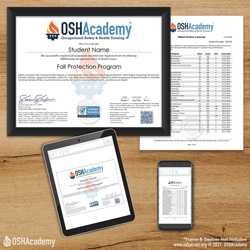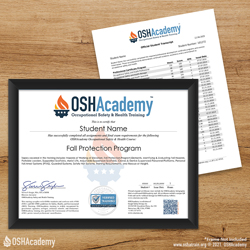Introduction
Employees who conduct work on elevated surfaces are exposed to fall hazards and are required to receive fall-protection training. This course will aid in decreasing exposure to fall hazards by explaining the components of an effective fall-protection program, training requirements, and emergency response. Personal fall-arrest systems, fall-restraint systems, and other fall-protection systems will be discussed, with general instructions on how to properly inspect and maintain equipment. Fall protection on ladders, scaffolds, and aerial platforms are also important topics covered in this course.
Course Objectives
| ID | Objective |
|---|---|
| TO 1.0 | Achieve a minimum score of 70% on the final course assessment. |
| LO 1.1.1 | Discuss the causes for falls and give examples of the most common falls experienced in the workplace. |
| LO 1.2.1 | Identify and describe the elements of an effective fall protection program. |
| LO 1.3.1 | List and discuss methods to identify and evaluate fall hazards. |
| LO 1.4.1 | Describe supported and suspended scaffold access safety practices. |
| LO 1.5.1 | Describe the components of Personal Fall Arrest Systems (PFAS). |
| LO 1.6.1 | Describe the components of Personal Fall Restraint Systems. |
| LO 1.7.1 | Detail fall protection training requirements. |
| LO 1.8.1 | Discuss inspection and maintenance requirements for fall protection equipment. |
| LO 1.9.1 | Describe the challenges associated with rescue at height. |
Key: Terminal Objective (TO), Learning Objective (LO)



